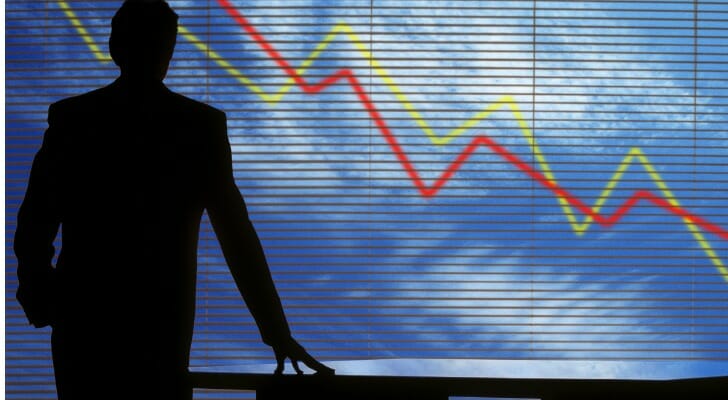 Bracket orders are a type of advanced securities order that help investors manage risk and maximize profits. They are especially useful for professional traders, day traders, swing traders, scalpers and others who may be exposed to significant risk and are taking advantage of market volatility in order to generate profits. A financial advisor can help you gauge your risk profile, which is essential before you start executing bracket orders.
Bracket orders are a type of advanced securities order that help investors manage risk and maximize profits. They are especially useful for professional traders, day traders, swing traders, scalpers and others who may be exposed to significant risk and are taking advantage of market volatility in order to generate profits. A financial advisor can help you gauge your risk profile, which is essential before you start executing bracket orders.
What Are Bracket Orders?
Bracket orders are multiple orders submitted simultaneously to buy and sell the same security. The bracket order contains conditions that automatically trigger buying or selling of the security whenever the conditions are met. This can help an investor lock in profits and limit losses even if stock prices move while the investor is away from his or her computer or internet connectivity is lost.
Also, because the bracket order is set in advance and executes automatically when the conditions are met, it removes human emotion from the equation. Investors and traders can decide in advance when they’ll buy or sell and be confident that will happen, even if during the interim they become greedy or fearful and liable to make poor decisions based on em0tion.
Bracket Order Features
There are typically two ways a bracket order can be triggered to execute. They are:
- Profit exit: This triggers sale of the security when the bid price rises to a pre-set level. It’s a way to ensure that the investor will lock in the desired gain on a security that is appreciating in value when the target profit has been achieved. It avoids the chances that an investor will become overly enthusiastic about a security that is rising in price rather than taking profits.
- Stop loss exit: This triggers sale of the security at the market price when the price goes down to a pre-set level. It’s a way to limit the size of the potential loss in case the price trend goes strongly against the investor. It helps investors avoid the urge to hang onto a stock that has lost value in hopes that the price will rise again.
An Example of a Bracket Order
 Bracket orders can be placed for many types of securities, including shares of common stock, exchange-traded funds, mutual funds, bonds, futures and options. The mechanics of the bracket order are similar when being used for different securities. To take an example using common stock, if an investor is buying shares of a company at $50, he or she may enter a bracket order with the following conditions:
Bracket orders can be placed for many types of securities, including shares of common stock, exchange-traded funds, mutual funds, bonds, futures and options. The mechanics of the bracket order are similar when being used for different securities. To take an example using common stock, if an investor is buying shares of a company at $50, he or she may enter a bracket order with the following conditions:
- The profit exit sale will be triggered if the share price reaches $55.
- The stop-loss exit will be triggered if the share price reaches $45.
This will ensure that if the share price rises the investor will take the profit once it reaches the predetermined level. At the same time, it will see that the investor will sell the position to limit losses in case the share price goes the other way. The bracket order can be for the entire position or all shares of the stock or other security, or for only a portion of the holding.
Other Trading Risk Management Tools
The bracket order combines other trading risk management tools that can be entered individually for execution. For instance, instead of entering a bracket order combining profit exit and stop-loss condition, a trader could after sending in a buy order for a stock also submit an order to sell the stock if it declines to a certain level. The advantage of the bracket order is that it triggers trading actions automatically and all the actions are submitted simultaneously.
This avoids the risk of a trader getting stuck in a money-losing position because, for instance, an emergency calls the trader away from the computer, the internet connection is temporarily lost or the trader simply forgot or neglected to enter a stop-loss order.
Once the bracket order is submitted, no further action by the trader is needed to see that the pre-determined risk management and profit maximization strategy is put into effect. Emotion, accident and distraction or are no longer factors in the outcome.
The Bottom Line
 Bracket orders are important advanced trading techniques especially useful for active investors such as day traders. They help investors to stick to their strategies for reaching predetermined profit levels when prices are going up and managing risk in the event of a downward trend in share prices.
Bracket orders are important advanced trading techniques especially useful for active investors such as day traders. They help investors to stick to their strategies for reaching predetermined profit levels when prices are going up and managing risk in the event of a downward trend in share prices.
Just keep in mind that not all brokers or trading platforms can accommodate bracket orders. For most investors, including the buy-and-hold long-term sort, this isn’t a problem. However, day traders, swing traders and other very active investors are likely to want to switch to a broker or trading platform that does offer bracket orders.
Tips on Investing
- If you are an active investor and want to manage risk, maximize profits and employ advanced trading strategies, consider working with an experienced financial advisor. Finding a financial advisor doesn’t have to be hard. SmartAsset’s free tool matches you with up to three vetted financial advisors who serve your area, and you can interview your advisor matches at no cost to decide which one is right for you. If you’re ready to find an advisor who can help you achieve your financial goals, get started now.
- Make sure your investments fit your risk profile. SmartAsset’s free, easy-to-use asset allocation calculator will help you align your assets with your risk tolerance.
Photo credit: ©iStock.com/Bartolome Ozonas, ©iStock.com/Ridofranz, ©iStock.com/Weekend Images Inc.